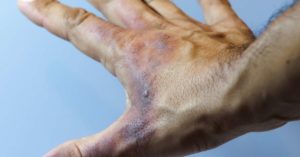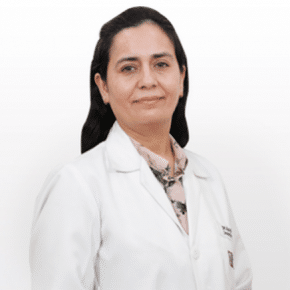Burns
You are cooking on the stove and also trying to pay rapt attention to your favorite television program. You know you should not combine both but, just as you are about to lift the pot handle, oops! You spilled the hot contents on your hand, and you are looking for a quick remedy to salve […] Read More
Top Doctors For Burns Treatments
Top Hospitals For Burns Treatments
Burns
You are cooking on the stove and also trying to pay rapt attention to your favorite television program. You know you should not combine both but, just as you are about to lift the pot handle, oops! You spilled the hot contents on your hand, and you are looking for a quick remedy to salve the pain.
Relax and run cool water over the burn. Now be enlightened about what just happened with that burn.
A burn means damage to the skin or tissues due to exposure to heat, radiation, electricity, chemicals, or excess friction. Depending on the severity of the burn, the injuries usually resolve after some time. The more severe cases of burn injuries require immediate medical assistance.
Types Of Burns
There are different types of burns based on the severity, and they are;
- First-degree Burn: This is usually mild and affects the top layer of skin, the epidermis. The affected area usually reddens and sometimes swells. There is pain at the site too. The burn heals within a few days without scarring or blistering. The sooner treatment begins, the faster the healing.
- Second-degree Burn: This is more severe and often causes blisters, reddening, and soreness. This burn extends beyond the epidermis, dermis and usually takes longer than two weeks to heal based on the extent of the damage. Sometimes, healing does not leave scar tissue formation. After the burn, the blisters formed pop and weep as exudates flow out. The wound should be covered or wound lightly with a gauze or bandage to prevent infection. In some extreme cases of second-degree burns, skin grafting is the treatment of choice whereby healthy skin tissue from an unaffected part of the body is placed at the burned area to aid the healing process.
- Third-degree Burn: It is considered the most severe. It causes the most damage extending past the dermis and sometimes results in nerve damage. The nerve damage accounts for why most victims do not feel the intense pain from the injuries. This type of burn requires immediate medical assistance because an attempt to self-medicate might only prolong healing time and cause complications. Surgery (skin grafting) is usually the best if not the only treatment option to prevent severe scarring or contracture affecting tendons and ligaments and hindering movement. Till medical assistance arrives, one can aid the victim by raising the affected site above the heart and preventing any clothing from attaching to the site. The burned area can turn black (charred) or white, leaving a leathery appearance with blisters that do not form or weep.

Complications Arising From Burns
- Infection: If left unattended and exposed to foreign bodies, the injury can get infected and escalate to sepsis.
- Blood loss is common in burns, especially in second and third degrees. The third-degree burns have worse hemorrhage as most skin layers and blood vessels are affected.
- Shock: Most burn cases that result in death are due to shock from the trauma.
- Tetanus: This is a common occurrence in burn cases. The causative bacterium gets through the broken skin and attacks the nervous system, causing problems with muscle contractions
- Hypothermia & Hypovolemia: The body loses excess heat from the burn injury, and the body temperature becomes dangerously low. Hence, resulting in hypothermia which is low body temperature. Hypovolemia results in extreme blood and fluid loss due to injuries sustained. This drastic reduction in blood volume (hypovolemia) can result in shock.
- Dehydration: This is a common occurrence due to excess fluid loss. Do not immediately give water to burn victims. It results in burn shock (a combination of distributive, hypovolemic, and cardiogenic shock).
- Organ failure: Severe burns affect organs’ abilities to function and cause the death of such organs.
First Aid Treatment
What to do
- Apply cool water to the wound for 5 – 15 minutes
- Take analgesic to ease the pain
- Apply topical anesthetic to soothe the skin
- Use antibiotic ointment on the affected area to protect against infection.
- Seek medical assistance after a burn particularly, when it occurs; at the groin or genitals, joints, face, hands, et cetera.
What not to do
- Do not use ice as this worsens the situation
- Do not use dry cotton wool on the wound as this can increase the risk of infection
- Do not apply any suspicious home remedies like butter, egg, or oils to the burn site
- Do not give the burn victim water
Before the treatment:
- Appropriate wound assessment is made to determine the degree of burn level before the treatment
During the treatment:
- First-aid involving wound dressings is provided to patients to encourage healing, especially for minor burns treatment.
- Water-based treatments such as UV mist therapy treatment to stimulate the wound tissue for treatment for second-degree burns
- IV fluids are given to prevent dehydration as well as organ failure in patients with third-degree burns
- A surgical procedure such as skin grafting is done for severe burns where sections of a person’s healthy skin are used to replace the scar tissue from severe burns. Usually, skins from deceased donors or skins of pigs act as a temporary solution for treatment for third-degree burns
- To ease the blood flow around the wound, the doctor usually cuts the eschar or the burn scab to relieve the pressure around the wound for treatment for third-degree burns
- People with severe degree burns usually go for plastic surgery or reconstruction surgery to improve the appearance caused by burn scars.
Prognosis, Post-burns treatment, and Recovery:
- Patients take pain and anxiety medications post-treatment. Medications and Painkillers such as morphine are particularly provided during dressing changes
- Burn creams, as well as ointments, will be administered by the doctor for wound healing. Bacitracin and Silvadene are usually administered to prevent infection and help prepare the wound to close for burns treatment.
- Visits to the hospital for anti-tetanus shots after the burns treatment
- Antibiotics prescribed post-burns treatment fight infections.

Skin burns treatment based on different causes:
- Oil Burns Treatment:
A person with burns caused by oil or hot water can be treated by cleaning and covering the wound to avoid infection. Utilize local emergency services based on the severity of the burn. Doctors usually prescribe acetaminophen and give basic first aid to help alleviate pain if the degree of burns is not that severe.
- Rope or Friction Burns Treatment:
Rope burns caused by friction, or coarse rubbing of rope over the skin, can be treated by cleaning and covering the wound to avoid infection. Call for medical attention depending on burn severity.
- Sun Burns Treatment:
For sunburns treatment, use a moisturizer that contains aloe vera or soy. It helps in soothing sunburned skin.
- Adhesive Tape Burns Treatment:
The area affected is cleansed with mild soap and water to remove a possible residue left from the adhesive. Medical attention is availed based on the severity of burns
- Ice or Icepack Burns Treatment:
The area affected is soaked in warm water for 20 minutes. Apart from that, applying warm compresses or blankets is done as part of warm-water treatments.
- Best Treatment for Radiation Burns:
The affected areas of the skin are moisturized and lubricated to prevent itching. Washing with lukewarm water can also be done to heal pain or itching.
- Heating Pad Burns Treatment:
Immerse the affected part in cool water for 10 or 15 minutes. Apart from that, apply butter or ointments to prevent infection
- Boiling Water or Scald Burns Treatment:
Refrain from breaking blisters, apply cool running water to cool the area for at least 20 minutes, keep the site elevated and apply the first-aid treatment.
- Acid Burns Treatment:
Perform first-aid treatment and call medical attention immediately.
- Chemical Burns on Face Treatment:
Perform first-aid treatment and call medical attention immediately.
Prevention Of Burn Accidents
Burns are usually accidental in homes and at work, and records show they occur majorly among children and the elderly due to carelessness or absent-mindedness. A few things to do to help prevent burns are listed below:
- Endeavor to wear sunscreen
- Check the temperature of hot water before attempting to bathe in it to avoid scalding
- Keep chemicals, lighters, matches away from children
- Do not leave children unsupervised in the kitchen or areas with a fireplace or stove
- Install and test fire alarms and fire protectors in your home
- Place fire extinguishers at home and the workplace and learn how to use them
- Switch off and cover electrical outlets when not in use
- Keep hot liquids away from children and pet
- Keep electrical gadgets away from water
- Never leave a cooking stove unattended
- Never cook wearing loose-fitting dresses which can catch fire
Burns can appear as mild, moderate, or severe based on the extent of tissue damage. Patients recovering from burns require physical therapy, rehabilitation, and even emotional support from a psychologist, as the incident can leave them feeling depressed and emotionally drained.
FAQ
- What is the correct treatment for first-degree or second-degree burns with closed blisters?
Treatment of most first- and second-degree burns with closed blisters is with cool water (Do not use ice or cold water). Avoid using any ointment since it can interfere with the healing process and cause an allergic reaction
- What is the correct treatment for second-degree or third-degree burns with open blisters?
Put the affected area of the skin under cool water for about 15 minutes, give acetaminophen medication, antibiotic cream to blisters, and utilize medical attention based on severity.
- What are some home treatments for burns?
Cool water and cool compresses, aloe vera, and using of honey are a few of the best home treatments for burns
- What should be done for finger burns or fingertip burns treatment?
Stop the burning process, cool the burn with cooling water, take pain relief medications, cover the burn by first-aid, and seek medical attention
- Which of the following is a guideline for the treatment of chemical burns?
These are the guidelines – when flushing with water, the person should minimize further wound contamination by ensuring that the fluid runs away from the injury and not toward uninjured areas.
- How can I get normal skin after a burn?
After a first-degree burn, the skin heals naturally after some time but, in severe second- or third-degree burns, you will require skin grafting surgery
- Should you cover a burn or let it breathe?
When there is exposed skin tissue, lightly cover the burn with gauze or wound dressing. This is to avoid exposure to air and foreign particles contaminating the wound.































































